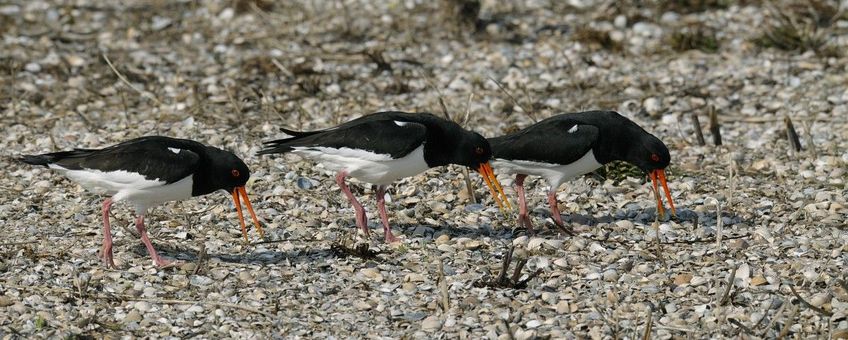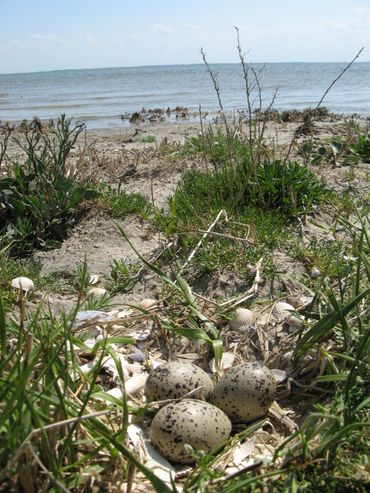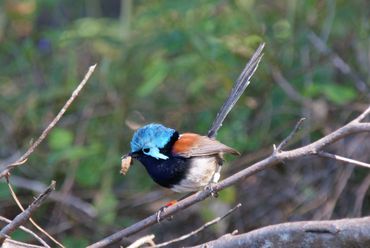
Extreme weather has greater impact on nature than expected
Netherlands Institute of Ecology (NIOO-KNAW)Extremes, outliers, cataclysms. As a field of biological research, it's still in its infancy, but interest in the impact of extreme weather and climate events on nature is growing rapidly. That's partly because it is now increasingly clear that the impact of extreme events on animal behaviour, ecology and evolution could well be greater than that of the 'normal' periods in between. And partly because the frequency of such events is likely to increase due to climate change.
Not 1 to 1

According to the researchers, most of the evidence suggests that the impact varies depending on the species and the circumstances. "Obviously for a bird, the impact of a couple of extremely cold days in December wouldn't be the same as in April or May, when there are chicks in the nest." This makes it very difficult to predict the consequences of extremes.
"We also don't know enough about the long-term consequences for nature of these crucially important extremes", say Van de Pol and Visser. "But that could be about to change." As guest editors of the june issue of Philosophical Transactions of the Royal Society B (Biological Sciences), the world's oldest scientific journal, they take stock of the available knowledge about extreme climatic events and the hiatuses that currently exist. They suggest a 'roadmap' for the further development of this new area of research, aimed at making it easier to compare and synthesize information across fields.
An added complication is that storm surges, heatwaves of five days or longer and decades of drought tend to be quite rare. But when they do occur, the consequences are often catastrophic: a challenging combination for researchers. Van de Pol: "Take the Wadden Sea. At the end of the 12th century, there was a storm that utterly transformed the Wadden Sea. The ecological consequences of that storm continued for decades, if not centuries." "Or take the dinosaurs", adds Visser. "They never recovered from the impact of a single meteorite in Mexico."
Fatal for fairies?
Less cataclysmic events, too, can have major consequences. Two examples are oystercatchers that build their nests close to the coast despite rising sea levels, and fairy-wrens, Australian passerine birds, that are increasingly exposed to heatwaves and high temperatures, with sometimes fatal consequences.
Just imagine you're an oystercatcher: one moment you sit there peacefully incubating your eggs on the saltmarsh, and the next your nest is gone. Engulfed by the Wadden Sea during a storm surge. Time-lapse footage from researchers on the Wadden island of Schiermonnikoog clearly demonstrates the danger. Van de Pol. "We've studied these nests for two decades, and during that time the number of flooding events has more than doubled. Yet the oystercatchers don't take any action."
Oystercatcher nest flooded (Source: Liam Bailey)
The researchers were keen to find out if the birds would learn from experience and build their nests on higher ground, safer but further from their favourite seafood, "but they don't". This could result in natural selection based on nest elevation, with only breeders who build their nest on high ground likely to survive. But this could affect the future viability of the population.
The other example looks at the impact on two species of passerine birds of a decrease in the number of cold spells and an increase in the number of heatwaves. The red-winged fairy-wren and the white-browed scrubwren both have their habitat in southwestern Australia and they are ecologically quite similar. So how do they respond over time? Do they change their body size to mediate the impact of the extreme temperatures? Van de Pol: "Data over nearly 40 years shows that the two species, although quite similar, respond in completely different ways".
Rocket science?
 So could rare extreme events be more likely to determine the success or failure of populations than the much longer 'normal' periods in between?
So could rare extreme events be more likely to determine the success or failure of populations than the much longer 'normal' periods in between?
"Let's say you've studied a breeding population of migratory birds for 49 years", explains Marcel Visser, "and year after year, the birds that arrive early in spring have the most chicks. It's hard to understand why more birds don't arrive early. Then, in the 50th year, a night of extremely cold weather suddenly kills 80% of the early arrivals, while the latecomers escape from the massacre. This may explain why the late birds are so successful at passing on their traits."
If that makes it sound as if it's all but impossible to make predictions, Visser agrees. "It's not exactly rocket science", he says,"with its complex and elaborate calculations. In fact, it's much more difficult than that!"
Text: Netherlands Institute of Ecology (NIOO-KNAW)
Photos: Piet Munsterman, Saxifraga (leadphoto: oystercatchers); Martijn van de Pol, NIOO-KNAW; Lyanne Brouwer, NIOO-KNAW
